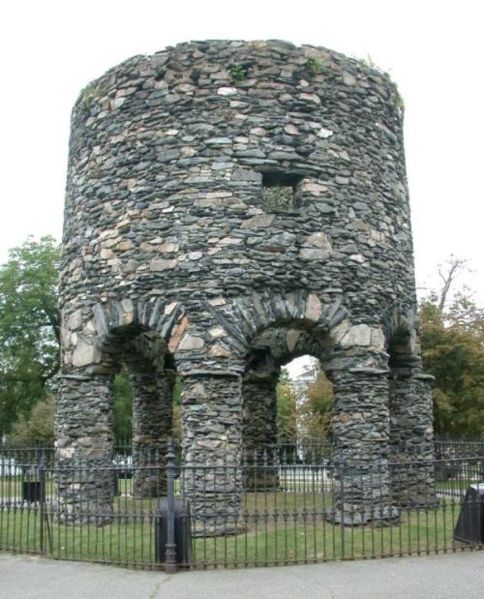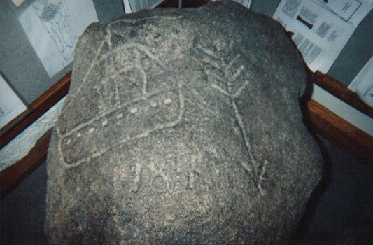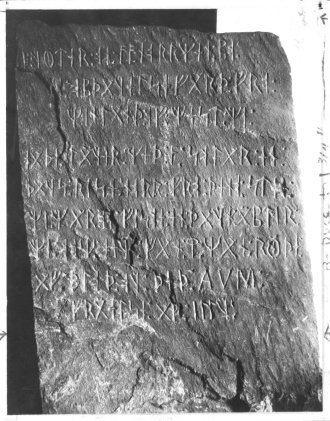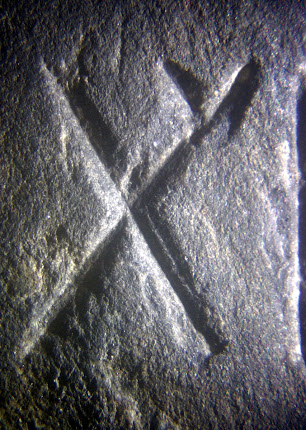I don’t often weigh in on the Oak Island mystery, though I do regularly watch the Curse of Oak Island show. There are plenty of capable and qualified researchers working on this mystery, and I prefer to focus on less well-known historical enigmas. However, as a Templar historian, I do sometimes uncover things relevant to the Oak Island mystery. I did so recently, something which, unless it somehow turns out to be invalid, ties the Templars to Oak Island with a high level of certainty: coconut fibers.
Coconut fibers have long been associated with the flood tunnels at Oak Island. As the theory goes, the fibers were used to prevent blockage of the box drains in the beach area of Smith’s Cove; these drains fed the flood tunnels, part of the booby-trap system used to protect the treasure buried underground in what has come famously to be known as the Money Pit. Coconuts, of course, are not native to Nova Scotia. And it is absurd to think they had floated up the coast of the Eastern Seaboard, as I have heard one archeologist suggest. Yet there they were.
I stumbled upon a research report compiled by Les MacPhie reporting on samples of the Oak Island coconut fiber having been subjected to carbon-dating by commercial laboratories. (A copy of the online report can be found here: https://www.oakislandtours.ca/.../b09_oak_island_carbon... . The second page of the report is reproduced below.) According to the report, a 1990 test by Beta Analytic yielded a date of 1180 AD, +- 60. A second test in 1996 by Woods Hole Oceanographic Institute yielded the remarkably similar date of 1185 AD, +- 35.
These dates jumped out me, being almost an exact match to the 1179 date of a purported Templar voyage to Oak Island (continuing on to the Catskill Mountains of New York) as described in the so-called Cremona Document, first extensively written about in 2017 by historian Zena Halpern. See The Templar Mission to Oak Island and Beyond, by Zena Halpern (CreateSpace 2017). See also The Scrolls of Onteora—The Cremona Document, by Donald A. Ruh (Lulu 2018). According to Halpern, the Templars deposited some or all of their treasure on Oak Island at a place labeled on a map (see below) of the island as “Le Voute en Bas de Terre,” or “The Vault Beneath the Earth” (left arrow). The map itself was labeled “Les Isle des Chene,” or “The Island of Oaks” (right arrow). (Note that this map displays a date of “1347” [not shown], perhaps indicating that it was drawn during a return visit by the Templars, subsequent to their original 1179 arrival.) This map has been regularly featured on the Curse of Oak Island show.
All of the above is available in the public record. What I was not aware of was the fact that coconuts are not native to the Americas. As of the twelfth century, coconuts were grown only in India, eastern Africa, Southeast Asia, and perhaps also Panama, but on the Pacific coast only. https://en.wikipedia.org/wiki/Coconut#Origin The Templars, it should be noted, were purported to have traveled extensively to Ethiopia (on the east coast of Africa) in the late twelfth century. See Graham Hancock, The Sign and the Seal (Touchstone 1992), at pages 103-117.
This, to me, was eye-opening. Someone brought the coconut fiber to Oak Island from one of these remote locations. Who, other than the Templars, had the wherewithal to do so in the twelfth century?
For anyone with an open mind, this evidence is difficult to shrug away.







2 comments:
I am enjoying your first book immensely so far; it's well-written, paced quickly, and the dialogue is believable.
The only challenge I have is that there are several historical/factual inaccuracies that could have been corrected with a bit of research. Now, I realize that it's fiction and - much like "The Da Vinci Code" and its ilk - you need to manipulate history and ideas to meet the needs of the narrative. I only find troubling that the challenges are, IMHO, unnecessary to the main plot.
For example, there was, in fact, a chess piece that was represented by a boat - but it was the rook, not the bishop. The piece we know as the bishop was originally a war elephant (!); the groove carved in the may have represented the elephant's tusks. In France it is still called the "fou" because the groove looks like a jester's cap - the "fool", and in most countries it is not called a "bishop" at all; it is called everything from "elephant" (still) to "messenger" to "hunter" to "runner" to "archer". So its development wasn't a religious/male oppression thing at all.
Regardless, I intend to keep going in the series, because it's just rollicking good fun.
Interesting about the chess piece. I went back to find my original research on the sailboat/bishop piece history and found this reference:
http://sinclair.quarterman.org/archive/2002/03/msg00021.html
Not an airtight source, I realize. And I found a Wiki page which confirms your post.
But I wonder if my larger point is still correct: The name "bishop" was given to the piece in parts of the world to placate the Church?
Glad you are otherwise enjoying the series!
Post a Comment